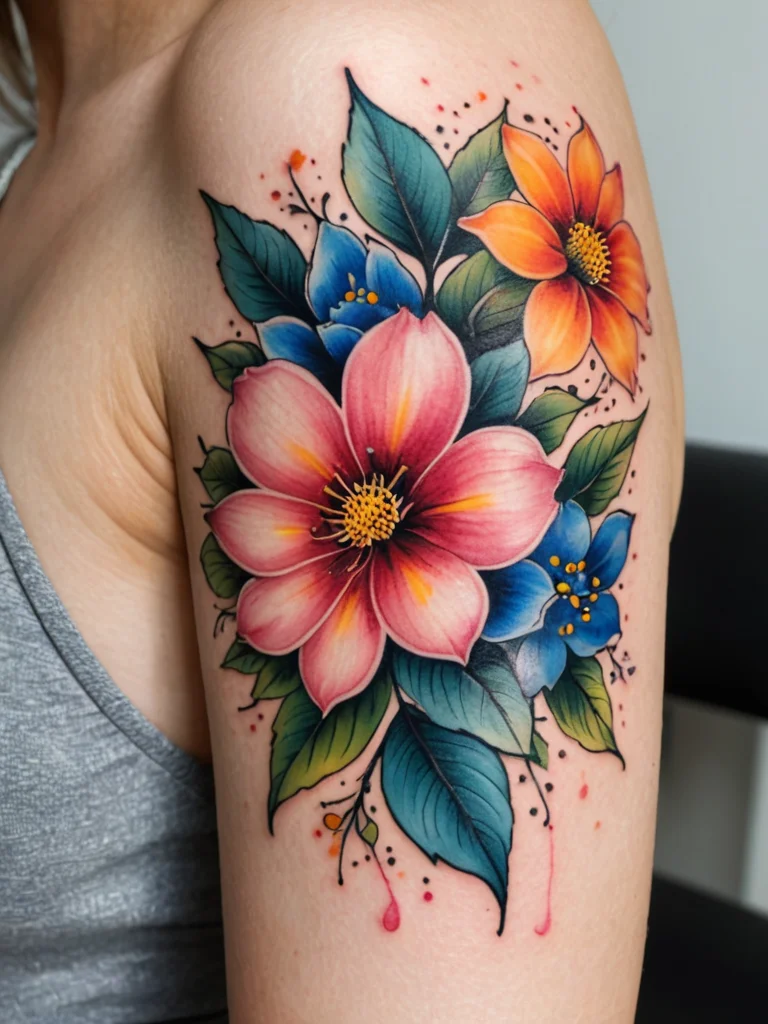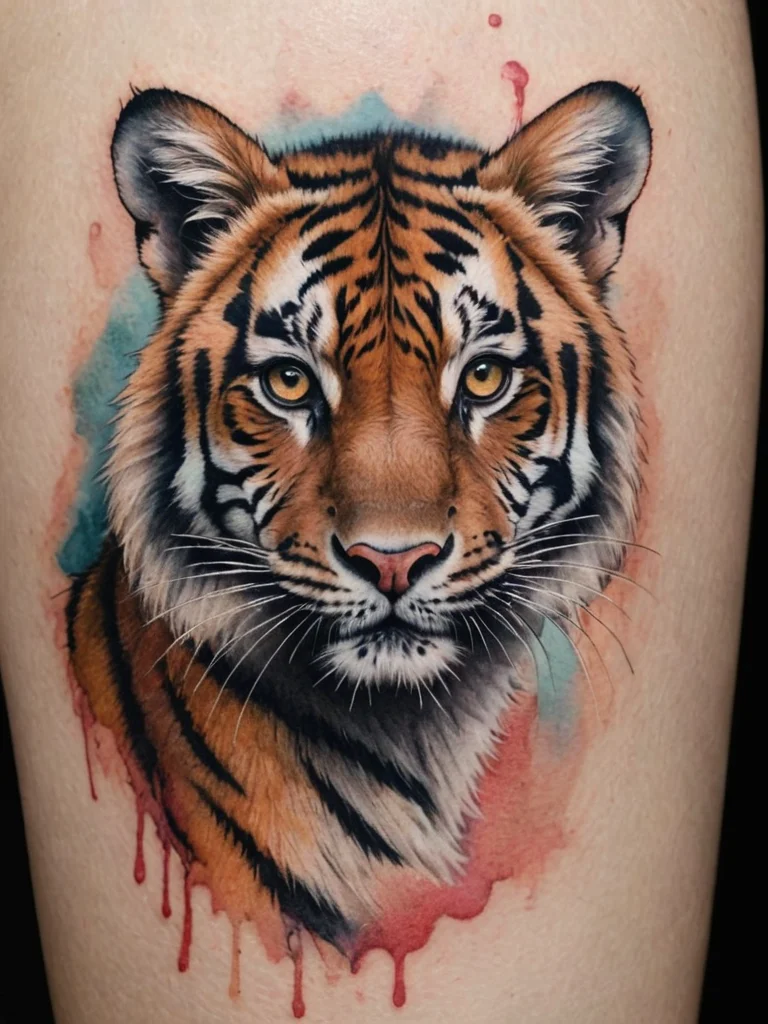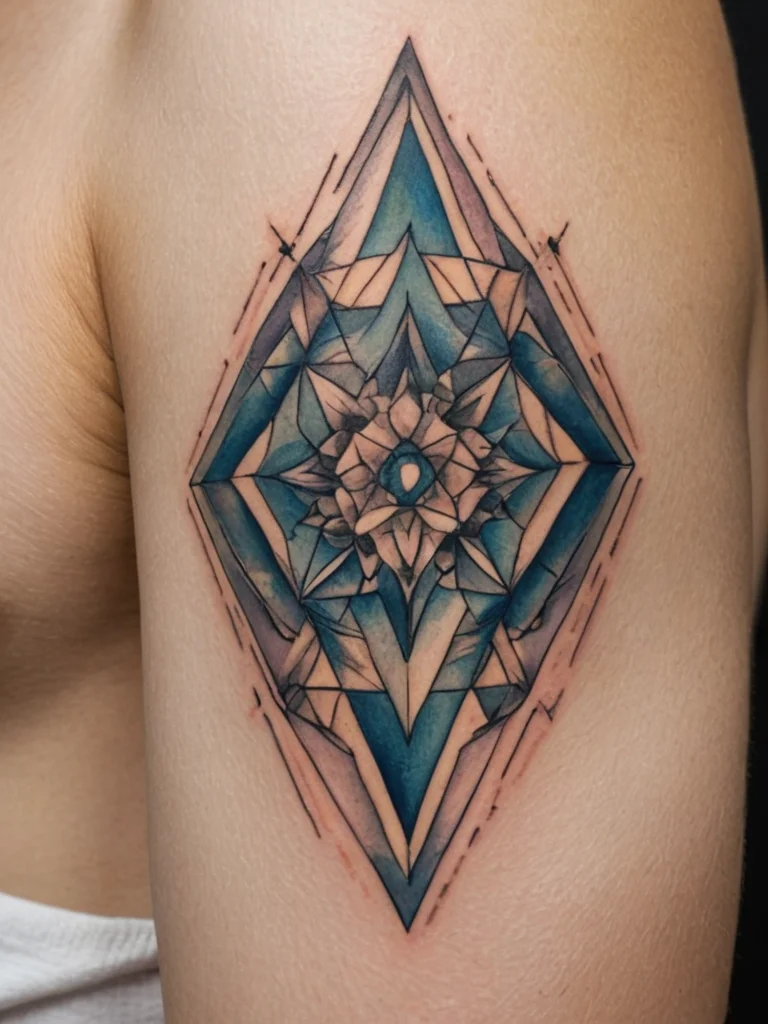Watercolor tattoos have exploded in popularity over the last decade, captivating audiences with their free-flowing designs, vibrant color palettes, and evocative resemblance to traditional paintings. Unlike the bold outlines and solid fills of many classic tattoo styles, watercolor tattoos embrace a softer, more blended aesthetic, often mimicking the way paint bleeds and washes across canvas. This unique approach allows for a level of artistic expression that feels both contemporary and deeply personal. However, like any tattoo style, watercolor designs come with their own set of considerations, both positive and negative. Understanding these nuances is crucial for anyone considering this beautiful yet distinct form of body art.
Are watercolor tattoos right for you? unpacking the pros and cons
As you contemplate your next tattoo or perhaps your very first, the allure of watercolor designs is undeniable. Their fluidity and artistic resemblance to fine art pieces make them a compelling choice for many. However, before you dive headfirst into a world of splashy colors and soft edges, it’s important to take a balanced look at what this style truly entails. The decision should be based not just on aesthetics but also on practicality, longevity, and how well the style aligns with your personal preferences for tattoo wearability. This exploration will help you weigh the dazzling advantages against the potential challenges, ensuring you make an informed choice that you’ll cherish for years to come.
The vibrant upside: why watercolor tattoos shine (pros explained)

The primary draw of watercolor tattoos lies in their stunning visual appeal. Artists specializing in this style masterfully employ techniques that mimic the natural flow and diffusion of watercolors on paper. This results in tattoos that are incredibly dynamic and visually arresting. The absence of heavy, dark outlines, a hallmark of many traditional tattoos, allows colors to blend seamlessly, creating soft gradients and ethereal effects. This lack of rigid structure gives the designs a sense of movement and organic energy. Think of a vibrant splash of ink, a delicate floral spray with colors bleeding into each other, or an abstract design that looks as if it’s still wet on your skin. The artistic freedom this style offers is immense, allowing for highly personalized and unique creations that stand out.
One of the most significant advantages is the sheer artistic potential. Artists can create illusions of transparency, light, and texture, much like a painter would. This allows for incredibly nuanced designs, from delicate floral patterns with soft petal edges to dramatic abstract pieces that evoke emotion through color alone. Many find that watercolor tattoos offer a more painterly and less traditionally “tattoo-like” appearance, which can be appealing if you’re looking for something that integrates more subtly or feels more like a piece of wearable art. The lack of strong outlines can also make these tattoos appear softer and more integrated with the skin, creating a beautiful, almost dreamlike quality. Furthermore, the versatility of the style means it can be applied to a wide range of subjects – animals, landscapes, abstract shapes, lettering, and even portraits can be rendered in a watercolor style, each gaining a unique, fluid interpretation.
The emotional resonance of watercolor tattoos is another key pro. The flowing colors and soft blending can evoke a sense of freedom, creativity, and even vulnerability. For many, the style embodies a connection to nature, art, or a specific personal journey, with the bleeding colors symbolizing transformation, passion, or the ebb and flow of life. The visual softness can also make them feel less intimidating than tattoos with sharp lines and dense shading, making them an attractive option for those who prefer a gentler aesthetic or are perhaps getting their first tattoo and are apprehensive about the permanence and boldness of traditional styles. The perceived “ephemerality” of watercolor, while a misnomer in the tattooing world, contributes to its delicate and artistic charm.
Navigating the nuances: potential downsides of watercolor tattoos (cons explained)
While the beauty of watercolor tattoos is undeniable, potential clients must be aware of the inherent challenges associated with this style, particularly concerning longevity and clarity over time. The very techniques that make watercolor tattoos so striking – the soft blending, the lack of bold outlines, and the subtle color transitions – can also be their Achilles’ heel when it comes to how they age. Unlike tattoos with strong, defined lines that act as anchors, watercolor designs rely heavily on the smooth diffusion of ink. Over the years, as skin naturally heals and ages, and as ink pigments spread slightly (a process known as blow-out, although skilled artists minimize this), these soft edges can become more blurred. What was once a crisp gradient might become a muddy wash, and delicate color transitions could lose their distinctiveness, potentially making the overall design less defined.
One of the most significant practical concerns is the potential for fading and color distortion. Lighter colors, which are often prominent in watercolor designs to achieve that signature translucent look, are inherently less saturated and can fade more quickly than darker, more opaque pigments. Exposure to sunlight is a major factor here; UV rays break down ink pigments, and lighter shades are more susceptible to this degradation. This means that areas with pale yellows, soft pinks, or light blues might lose their vibrancy sooner than expected. Furthermore, the way colors interact and bleed into one another in a watercolor style can sometimes lead to unintended color muddiness over time. If not executed perfectly, or if colors are placed too closely without proper consideration for how they might blend as the skin ages, the intended vibrant splashes can eventually merge into less appealing tones.
The complexity of the style also presents challenges for artists. Executing a truly successful watercolor tattoo requires exceptional skill, precision, and a deep understanding of color theory and pigment interaction. Not all tattoo artists are equipped to handle this style effectively. An artist who lacks experience with watercolor techniques might struggle to achieve the desired soft edges, smooth gradients, and vibrant color blends, resulting in a tattoo that looks muddy, blotchy, or simply doesn’t capture the intended aesthetic. Finding an artist who has a proven portfolio specifically in watercolor tattoos is absolutely paramount. This often means seeking out specialists rather than general tattooists. The repair or touch-up process can also be more complicated for watercolor designs. Reviving faded colors or correcting blurred lines may require a highly skilled artist who can replicate the original delicate application without making the problem worse.
Making your watercolor tattoo last: essential aftercare & artist selection tips

To ensure your beautiful watercolor tattoo retains its vibrancy and clarity for as long as possible, meticulous aftercare is non-negotiable. Immediately following the tattooing process, your artist will provide specific instructions, which typically involve keeping the tattoo clean and moisturized. This usually means gently washing the area with a mild, fragrance-free soap and cool water, followed by applying a thin layer of a recommended ointment or lotion. It’s crucial to avoid submerging the tattoo in water (no baths, hot tubs, or swimming) during the initial healing phase, which can last several weeks. Patting the area dry with a clean towel instead of rubbing is also important to prevent irritation. Protecting the healing tattoo from direct sunlight is paramount. Sun exposure is the enemy of all tattoos, but particularly for the lighter, more delicate colors found in watercolor designs. Once healed, continuing to protect your tattoo from the sun with high SPF sunscreen whenever it’s exposed will significantly slow down the fading process and preserve the integrity of the colors and blends.
When selecting an artist for your watercolor tattoo, thorough research is key. Look for artists who have a substantial portfolio showcasing healed watercolor tattoos, not just fresh ones. Healed photos provide a more realistic preview of how the style ages. Pay close attention to the clarity of the colors, the smoothness of the gradients, and how well the design has retained its definition over time. Don’t hesitate to ask potential artists about their experience with watercolor techniques and how they anticipate the design will age. A reputable artist will be transparent about the potential challenges and will offer guidance on design elements that might hold up better over time. Consider the placement of the tattoo as well. Areas of the body that experience more friction or stretching might affect how any tattoo, including watercolor, ages. Discussing these factors with your chosen artist can help you make informed decisions about both design and placement.
Understanding the pigments used is also beneficial. High-quality, reputable ink brands tend to be more fade-resistant. While most professional artists use excellent products, asking about the ink can provide peace of mind. Furthermore, consider the design itself. While artists can achieve incredible results with pure watercolor techniques, some artists incorporate subtle, fine-line black or dark outlines in key areas to provide structure and prevent certain elements from bleeding together too much over time. This is not always necessary, and many pure watercolor tattoos age beautifully, but it’s a technique that some find enhances longevity. Discussing design modifications with your artist to balance the desired aesthetic with long-term wearability is a wise step. Ultimately, choosing an artist with a proven track record in the specific style you desire is the single most important factor in achieving a stunning and lasting watercolor tattoo.
Your watercolor tattoo journey: final thoughts and inspiration

Embarking on the journey of getting a watercolor tattoo is an exciting prospect. It’s a style that offers a unique avenue for self-expression, allowing you to wear a piece of art that feels fluid, vibrant, and deeply personal. The key to a successful and satisfying experience lies in a combination of understanding the style’s inherent characteristics, choosing the right artist, and committing to proper aftercare. By appreciating both the breathtaking beauty and the potential challenges, you can approach your decision with confidence and clarity.
Remember that tattoos are a permanent art form, and the watercolor style, with its delicate nature, requires careful consideration. However, when executed by a skilled artist and nurtured with diligent care, a watercolor tattoo can be a truly magnificent addition to your body art collection. Whether you’re drawn to the soft washes of a floral piece, the dynamic energy of an abstract design, or the ethereal quality applied to a portrait, this style offers a world of creative possibilities. Let the artistry inspire you, and trust in the expertise of your chosen tattoo professional to bring your vision to life in a way that you will treasure for a lifetime.